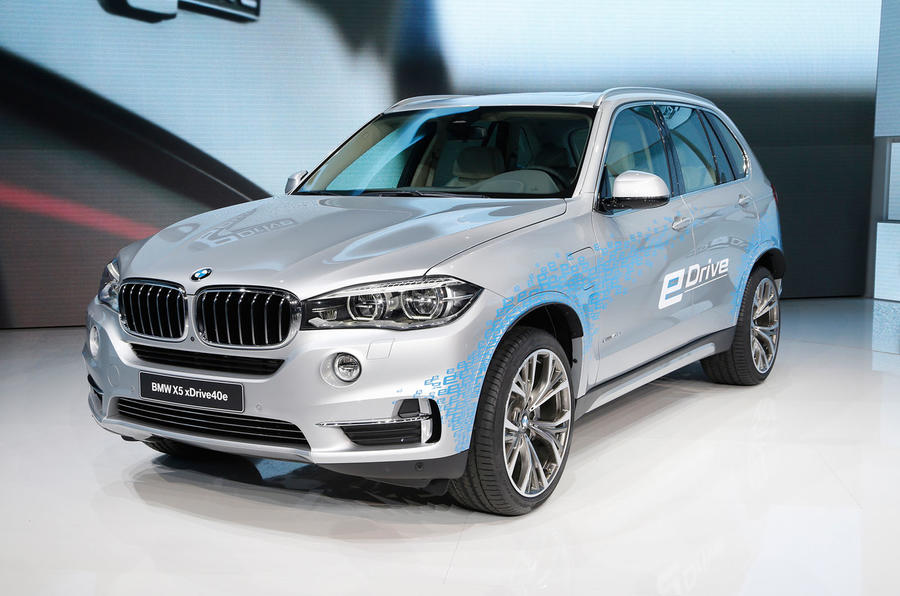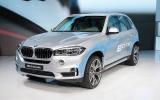BMW has shown its new new plug-in petrol-electric BMW X5 xDrive40e.
Driven in prototype guise by Autocar at BMW’s Miramas test track in France last year, the hybrid-powered X5 runs a longitudinally mounted turbocharged 2.0-litre petrol engine. The four-cylinder unit has outputs of 242bhp and 258lb ft of torque and works in combination with an electric motor that's sited in the forward section of its standard eight-speed automatic gearbox and produces 111bhp and 184lb ft.
Altogether, the X5 xDrive40e possesses a combined system output of 309bhp and 332lb ft. This gives it 55bhp more but 81lb ft less than the popular turbocharged 3.0-litre six-cylinder diesel X5 xDrive30d.
The X5 xDrive40e’s electric motor draws energy from a 9kWh lithium ion battery consisting of 96 individual cells. The mounting of the battery at the rear reduces boot space by 150 litres over existing petrol and diesel-powered third-generation X5 models, with BMW claiming a nominal 500 litres with the split/folding rear seats in place. The recharging time is put at 2hr 48min on an optional 3.5kW wallbox that operates at 16 amperes and 230V.
The new BMW offers three driving modes: Auto eDrive (in which the electric motor supplements the petrol engine for maximum performance), Max eDrive (exclusively electric power), and Save Battery (which maintains the state of charge of the battery, possibly for later use in cities like London, where electric vehicles are excluded from road charges).
BMW quotes a 0-62mph time of 6.8sec and a maximum speed that is limited to 131mph. By comparison, the X5 xDrive30d possesses figures of 6.8sec and 143mph respectively. The electric range is put at 19 miles, at speeds limited to 75mph.
On standard 8.5Jx18in wheels shod with 255/55 R18 tyres, the 2230kg X5 xDrive40e returns claimed fuel economy of 85.6mpg on the combined cycle, giving it an official CO2 rating of 77g/km. Power consumption on the same test is put at 15.3kWh per 100km (62 miles).
BMW says the X5's chassis has been retuned for the hybrid version. Among the standard equipment is adaptive damping and self-levelling rear air suspension. The driver can alter the chassis via a so-called Driving Experience Control function, which offers Comfort, Sport and Eco Pro modes.
Read more Shanghai motor show news
Get the latest car news, reviews and galleries from Autocar direct to your inbox every week. Enter your email address below:
















































































































Join the debate
Add your comment
77g/km - opportunity missed!
77g/km - opportunity missed!
Range